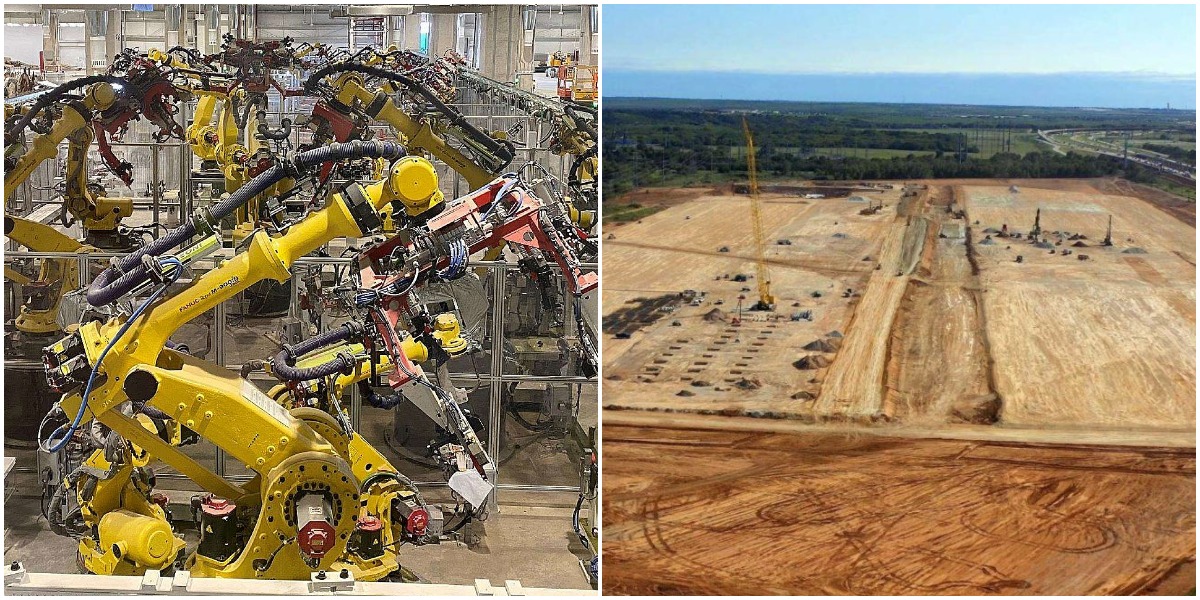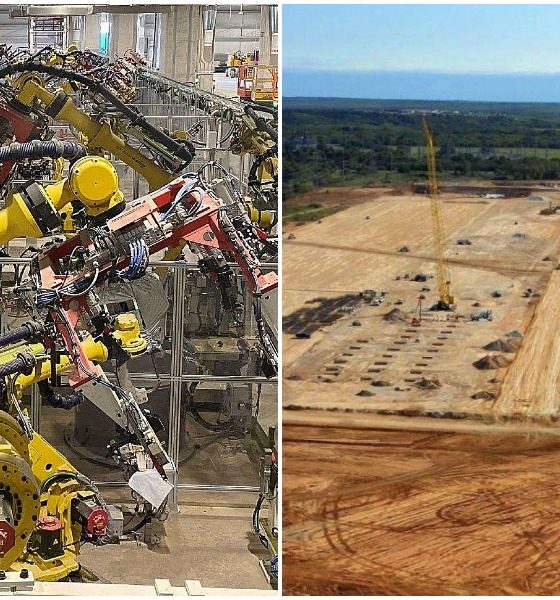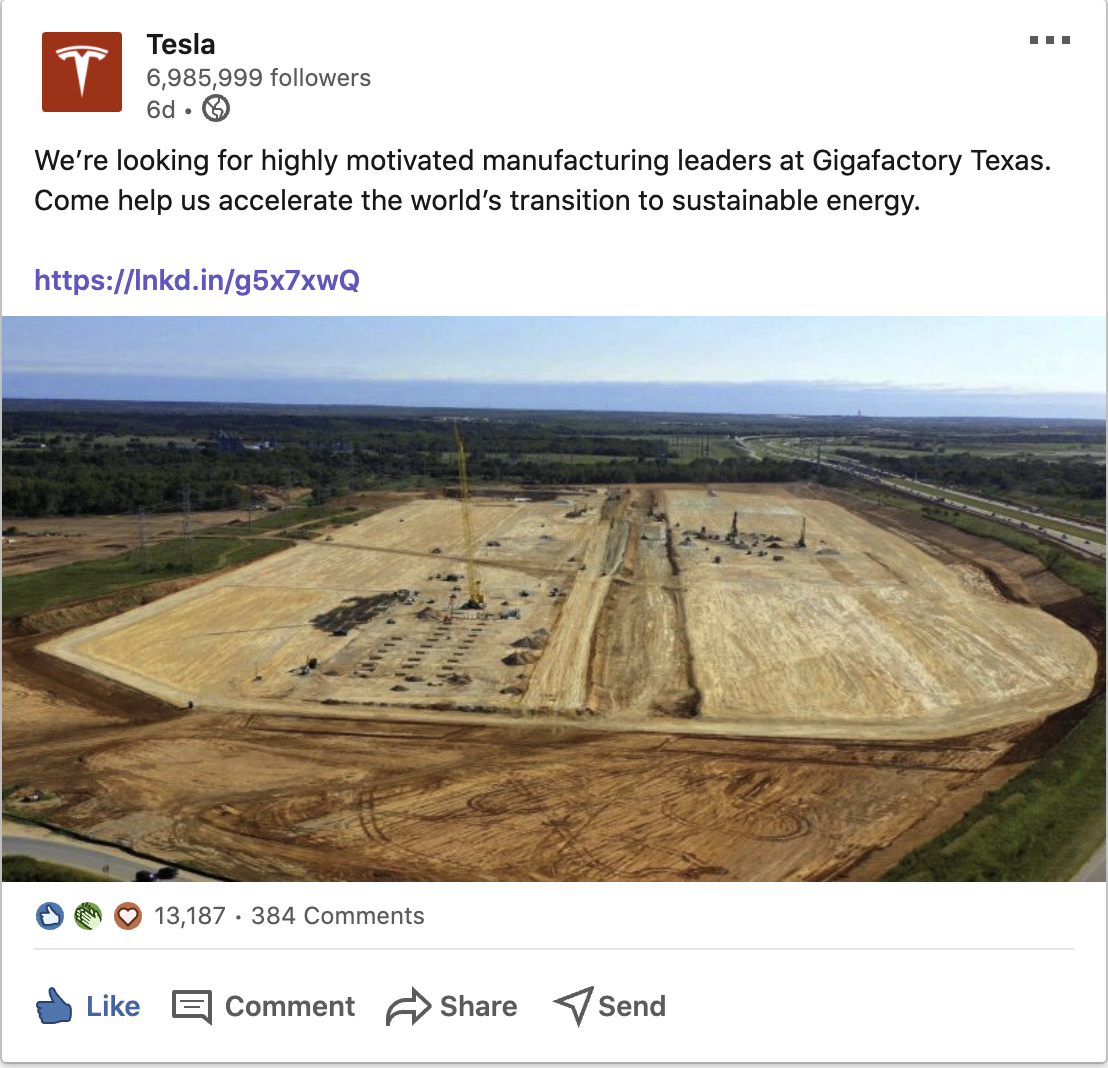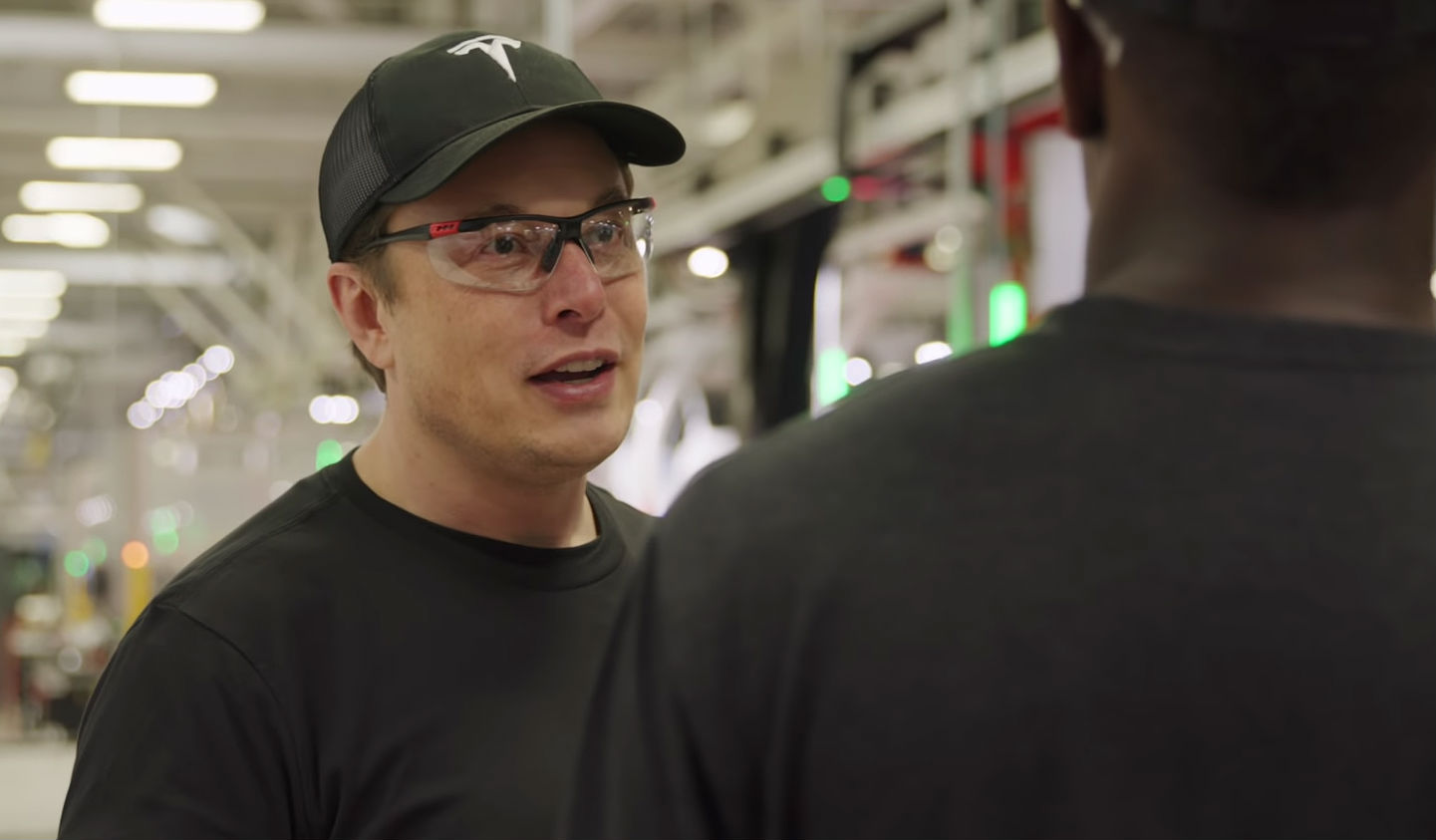

News
Tesla Giga Texas is a clean slate for launching its next-gen manufacturing processes
Tesla’s new Giga Texas facility will the second United States-based location for the all-electric automaker to manufacture its vehicles. With its first being located in Fremont, California, which has been in operation for Tesla since 2010, it may be planning to use its new Texas plant as a “clean slate” for manufacturing testing. With a widespread focus of the company being primarily set on making its vehicles faster, in larger amounts, and with better quality than ever before, a fresh spread of production lines in a new plant that is close to home is ideal for CEO Elon Musk, who announced the Texas plant during the Q2 2020 Earnings Call.
But apart from the new plant, the Q2 2020 Earnings Call included another big piece of information that was repeatedly discussed: manufacturing efficiency. With engineers who can help Tesla solve the manufacturing puzzle in high demand, the automaker can begin to set its sights on reaching a more sizable annual production and delivery rate.
However, it starts with the right personnel, and Tesla is surely searching for some highly-capable individuals who can help introduce new techniques and processes to the supply chain.
Tesla has been seeking individuals to help revolutionize its manufacturing processes. It starts with Giga Texas.
Manufacturing is where Tesla begins its process of delivering a car to a customer. After rounding up all of the material and necessary parts and people, a car can be built on production lines. However, there is always room for improvement, and as demand continues to grow in the face of an ever-changing automotive industry, Tesla needs to adapt. Without a doubt, the company recognizes that the key to keeping up with demand is building vehicles faster than ever before.
Musk, for one, is all-too-familiar with the struggles of building cars. When the Model 3’s introduction of “production hell” brought Tesla to a crossroads in 2017, it was evident that things needed to be solved. More lines and more personnel were brought in, but there is a better strategy than just adding more volume. There is a chance to revolutionize the way cars are built, making the entire process easier, more refined, and better for the company as a whole.
Sheer magnitude of the entire production system is hard to appreciate. Almost every element of production is >75% automated. Only wire harnesses & general assembly, which are <10% of production costs, are primarily manual.
— Elon Musk (@elonmusk) October 12, 2020
For Tesla, manufacturing half-a-million units of the same two cars every year is far from monotonous and repetitive. It is an opportunity to learn.
“…They sort of put manufacturing is like, oh, this is for some boring, just making copies, whatever. But actually, there’s far more opportunity for innovation in manufacturing than in the products itself, order magnitude,” Musk said during the company’s second-quarter Earnings Call. “If you work on manufacturing engineering, but you don’t just get force-fed a sandwich. You get to change the product design. So it’s super exciting.”
A focus on manufacturing has put Tesla at the forefront of automotive technology and design. Musk has even said himself that the company’s long-term sustainable advantage would be manufacturing. Eventually, other automakers will create and build a line of sustainable, functional, and operational EVs. However, Tesla will be able to put themselves ahead of the pack simply because the company’s manufacturing efficiency will be “head and shoulders” above everyone else.
Tesla will be absolutely head and shoulders above anyone else in manufacturing. That is our goal.” -Elon Musk
“Eventually, every car company will have long-range electric cars. Eventually, every company will have autonomy. But not every company will be great at manufacturing. Tesla will be absolutely head and shoulders above anyone else in manufacturing. That is our goal,” Musk said.
The problem is that testing these new techniques and ideas becomes difficult when you have two functional production plants and two others that are being constructed. Without a doubt, trying new things in terms of manufacturing could be detrimental to current lines and could interrupt the much-needed production efforts that are going on currently. So the only way to really test it is to build a new facility and try things on lines that have yet to be used.
This is where Tesla’s advantage lies with Giga Texas. It becomes the perfect place to test new techniques as lines have yet to be built, and none of the company’s current infrastructure is dependent on Giga Texas’ output. Not only is it a fresh start, but it is also close to home, and Musk will have the opportunity to oversee new production and manufacturing methods by simply hopping on his private jet and darting off to the Lone Star State.
Elon Musk giving YouTube tech reviewer Marques Brownlee a tour of the Fremont factory. (Credit: MKBHD/YouTube)
Tesla is currently looking for proven manufacturing leaders to take charge of the Giga Texas plant as well. This job won’t be business as usual or the same monotonous challenges day in and day out. Tesla is looking for a change, and it is dead set on coming up with new ways to make cars efficiently. As the company nears a 1 million vehicle a year production rate, Giga Texas may be the way Tesla sets itself apart from all other car companies by showing new and innovative techniques that could drive the company’s manufacturing practices to become more efficient and groundbreaking for the future.

News
Tesla FSD fleet is nearing 7 billion total miles, including 2.5 billion city miles
As can be seen on Tesla’s official FSD webpage, vehicles equipped with the system have now navigated over 6.99 billion miles.

Tesla’s Full Self-Driving (Supervised) fleet is closing in on almost 7 billion total miles driven, as per data posted by the company on its official FSD webpage.
These figures hint at the massive scale of data fueling Tesla’s rapid FSD improvements, which have been quite notable as of late.
FSD mileage milestones
As can be seen on Tesla’s official FSD webpage, vehicles equipped with the system have now navigated over 6.99 billion miles. Tesla owner and avid FSD tester Whole Mars Catalog also shared a screenshot indicating that from the nearly 7 billion miles traveled by the FSD fleet, more than 2.5 billion miles were driven inside cities.
City miles are particularly valuable for complex urban scenarios like unprotected turns, pedestrian interactions, and traffic lights. This is also the difference-maker for FSD, as only complex solutions, such as Waymo’s self-driving taxis, operate similarly on inner-city streets. And even then, incidents such as the San Francisco blackouts have proven challenging for sensor-rich vehicles like Waymos.
Tesla’s data edge
Tesla has a number of advantages in the autonomous vehicle sector, one of which is the size of its fleet and the number of vehicles training FSD on real-world roads. Tesla’s nearly 7 billion FSD miles then allow the company to roll out updates that make its vehicles behave like they are being driven by experienced drivers, even if they are operating on their own.
So notable are Tesla’s improvements to FSD that NVIDIA Director of Robotics Jim Fan, after experiencing FSD v14, noted that the system is the first AI that passes what he described as a “Physical Turing Test.”
“Despite knowing exactly how robot learning works, I still find it magical watching the steering wheel turn by itself. First it feels surreal, next it becomes routine. Then, like the smartphone, taking it away actively hurts. This is how humanity gets rewired and glued to god-like technologies,” Fan wrote in a post on X.
News
Tesla starts showing how FSD will change lives in Europe
Local officials tested the system on narrow country roads and were impressed by FSD’s smooth, human-like driving, with some calling the service a game-changer for everyday life in areas that are far from urban centers.

Tesla has launched Europe’s first public shuttle service using Full Self-Driving (Supervised) in the rural Eifelkreis Bitburg-Prüm region of Germany, demonstrating how the technology can restore independence and mobility for people who struggle with limited transport options.
Local officials tested the system on narrow country roads and were impressed by FSD’s smooth, human-like driving, with some calling the service a game-changer for everyday life in areas that are far from urban centers.
Officials see real impact on rural residents
Arzfeld Mayor Johannes Kuhl and District Administrator Andreas Kruppert personally tested the Tesla shuttle service. This allowed them to see just how well FSD navigated winding lanes and rural roads confidently. Kruppert said, “Autonomous driving sounds like science fiction to many, but we simply see here that it works totally well in rural regions too.” Kuhl, for his part, also noted that FSD “feels like a very experienced driver.”
The pilot complements the area’s “Citizen Bus” program, which provides on-demand rides for elderly residents who can no longer drive themselves. Tesla Europe shared a video of a demonstration of the service, highlighting how FSD gives people their freedom back, even in places where public transport is not as prevalent.
What the Ministry for Economic Affairs and Transport says
Rhineland-Palatinate’s Minister Daniela Schmitt supported the project, praising the collaboration that made this “first of its kind in Europe” possible. As per the ministry, the rural rollout for the service shows FSD’s potential beyond major cities, and it delivers tangible benefits like grocery runs, doctor visits, and social connections for isolated residents.
“Reliable and flexible mobility is especially vital in rural areas. With the launch of a shuttle service using self-driving vehicles (FSD supervised) by Tesla in the Eifelkreis Bitburg-Prüm, an innovative pilot project is now getting underway that complements local community bus services. It is the first project of its kind in Europe.
“The result is a real gain for rural mobility: greater accessibility, more flexibility and tangible benefits for everyday life. A strong signal for innovation, cooperation and future-oriented mobility beyond urban centers,” the ministry wrote in a LinkedIn post.
News
Tesla China quietly posts Robotaxi-related job listing
Tesla China is currently seeking a Low Voltage Electrical Engineer to work on circuit board design for the company’s autonomous vehicles.

Tesla has posted a new job listing in Shanghai explicitly tied to its Robotaxi program, fueling speculation that the company is preparing to launch its dedicated autonomous ride-hailing service in China.
As noted in the listing, Tesla China is currently seeking a Low Voltage Electrical Engineer to work on circuit board design for the company’s autonomous vehicles.
Robotaxi-specific role
The listing, which was shared on social media platform X by industry watcher @tslaming, suggested that Tesla China is looking to fill the role urgently. The job listing itself specifically mentions that the person hired for the role will be working on the Low Voltage Hardware team, which would design the circuit boards that would serve as the nervous system of the Robotaxi.
Key tasks for the role, as indicated in the job listing, include collaboration with PCB layout, firmware, mechanical, program management, and validation teams, among other responsibilities. The role is based in Shanghai.
China Robotaxi launch
China represents a massive potential market for robotaxis, with its dense urban centers and supportive policies in select cities. Tesla has limited permission to roll out FSD in the country, though despite this, its vehicles have been hailed as among the best in the market when it comes to autonomous features. So far, at least, it appears that China supports Tesla’s FSD and Robotaxi rollout.
This was hinted at in November, when Tesla brought the Cybercab to the 8th China International Import Expo (CIIE) in Shanghai, marking the first time that the autonomous two-seater was brought to the Asia-Pacific region. The vehicle, despite not having a release date in China, received a significant amount of interest among the event’s attendees.








